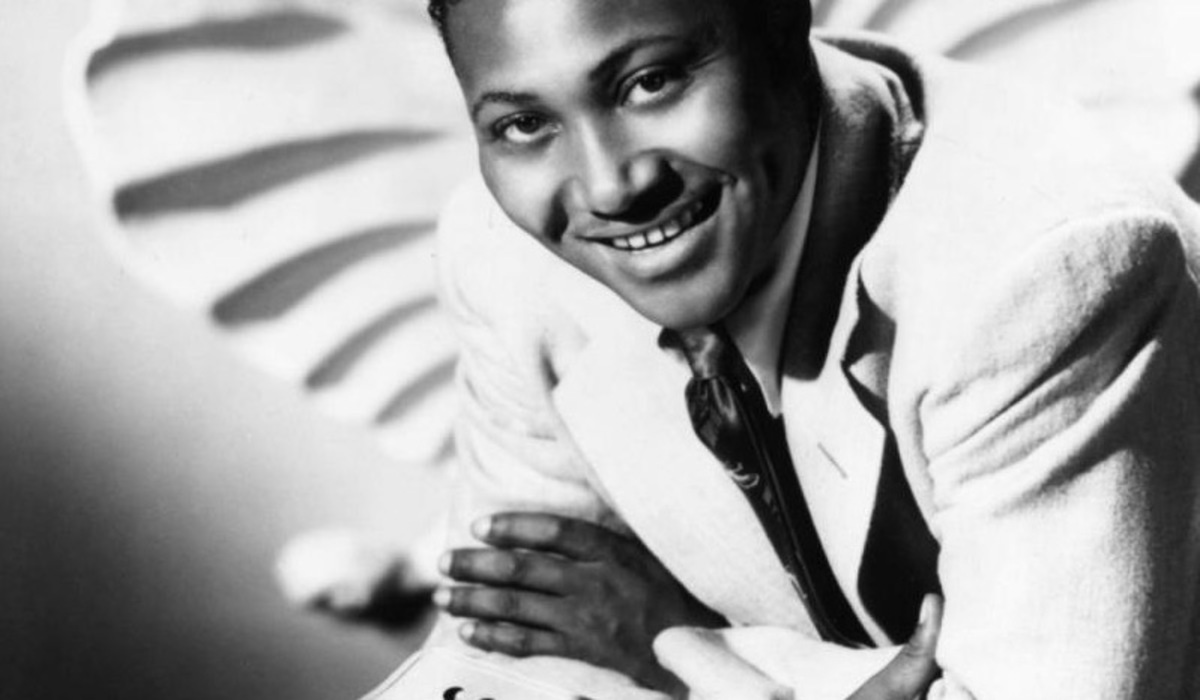Amos Milburn – A Complete Biography
Introduction
Amos Milburn (1927–1980) was one of postwar America’s most exuberant blues and R&B pianists—a jump-blues hitmaker whose boogie-woogie drive, sly humor, and string of “drinking songs” helped set the stage for early rock ’n’ roll. His records in the late 1940s and early ’50s—“Chicken Shack Boogie,” “Bad, Bad Whiskey,” “One Scotch, One Bourbon, One Beer,” among others—made him a star on the R&B charts and a model for artists from Fats Domino to Little Richard.

Childhood
Joseph Amos Milburn Jr. was born April 1, 1927, in Houston, Texas. Raised in a large family, he showed musical talent at an early age, beginning to play the piano by the age of five. Stories from Houston’s club scene describe the young Milburn listening outside nightspots and later recreating the music he heard on piano, developing his signature style with a rolling left hand and upbeat, party-oriented rhythms.
Youth
As a teenager, Milburn lied about his age to enlist in the U.S. Navy during World War II, serving in the Pacific and earning numerous service stars. After the war, he returned to Houston and led a large dance band, which soon brought him attention from Aladdin Records. Moving to Los Angeles, he began a prolific recording career, laying down more than 75 tracks by the end of the 1940s.
Adulthood
Milburn’s breakthrough came in 1948–49 with a series of jump-blues singles that showcased his humor and energy. “Chicken Shack Boogie” and “Hold Me Baby” became major hits, and in 1950 he reached the top of the R&B chart with “Bad, Bad Whiskey.” This song marked the start of his reputation as a master of good-time drinking anthems, followed by other hits like “Thinking and Drinking,” “Let Me Go Home, Whiskey,” and “One Scotch, One Bourbon, One Beer.”
Operating largely out of Los Angeles, Milburn became a central figure on the West Coast R&B scene. His long collaboration with tenor saxophonist and producer Maxwell Davis helped refine the horn-driven arrangements and sleek style that defined his music.
By the mid-1950s, musical tastes changed, and Milburn’s popularity waned. Aladdin dropped him in 1957, and although he released tracks for other labels, none matched his earlier success. In 1963, he recorded The Return of the Blues Boss, which reaffirmed his legacy. Milburn also recorded holiday classics like “Let’s Make Christmas Merry, Baby” (1949) and “Christmas (Comes but Once a Year)” (1960).
Major Compositions (Signature Recordings)
- “Chicken Shack Boogie” (1948/49) – A defining jump-blues track that captured Milburn’s energetic style.
- “Hold Me Baby” (1949) – A smooth R&B number showcasing his vocal phrasing.
- “Roomin’ House Boogie” (1949) – A humorous, rhythm-packed single with punchy horns.
- “Bad, Bad Whiskey” (1950) – His biggest hit, cementing his image as a barroom storyteller.
- “Thinking and Drinking” (1952) – A witty anthem reinforcing his persona.
- “Trouble in Mind” (1952) – His interpretation of a blues classic that bridged tradition and modern R&B.
- “Let Me Go Home, Whiskey” (1953) – Another spirited ode to nightlife.
- “One Scotch, One Bourbon, One Beer” (1953) – One of his most iconic songs, later covered by numerous artists.
- “Let’s Make Christmas Merry, Baby” (1949) – A soulful holiday staple.
- Rockin’ the Boogie and The Return of the Blues Boss – Albums that encapsulate his boogie-woogie and R&B mastery.
Death
In the 1970s, Milburn suffered a series of strokes that limited his ability to perform. A late-career session led by Johnny Otis required Otis to play the left-hand piano parts on Milburn’s behalf. Amos Milburn passed away on January 3, 1980, in Houston at the age of 52. He was buried in Houston National Cemetery.
Conclusion
Amos Milburn’s influence on rhythm and blues and the birth of rock ’n’ roll is undeniable. In his prime, he combined boogie-woogie piano with clever lyrics and irresistible grooves, creating a blueprint for generations of performers. His work with Aladdin Records remains a testament to his artistry, and his lively recordings continue to resonate with listeners, keeping his legacy alive as one of R&B’s original “blues bosses.”

Comments are closed